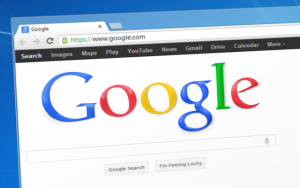Here’s the short version: Social is good, if you’re careful. Mobile is much better than it was, if you’re careful. Viral “news” sites have ruined the internet. Big names are no guarantee of good traffic.
Once upon a time, there was a golden age of online advertising. People were shopping online, but the big brands hadn’t yet caught on. It was a glorious time. Small advertisers could put together a list of business relevant keywords on any one of the major search engines and be virtually guaranteed to get good traffic from real consumers. Fat chance today. Today it is easier than ever for businesses to advertise online, but harder than ever to get consistently good results. I find myself monitoring, updating and evaluating my ad campaigns more than ever before. It’s a war out there! In this article I discuss a few of the major issues and opportunities facing online advertisers.
These are my opinions as of January 2017. Your mileage may vary.
Social Media
Social media is a thing. Online advertising opportunities on social media are better than ever, but advertising on social is not the same as search engine advertising. For one, targeting is based on user demographics and interests instead of keywords. Since users on social networks are not actively engaged in seeking out your product, social ads need to tell a story more than just show a product. Here’s a quick run down of my top social networks for advertisers:
Facebook Ads

Good if you know your audience, but expensive. And if your first thought is that your audience is “everybody” then you haven’t done your research. Not good for low margin businesses or businesses who have a “run and gun” approach to sales and customer service. People talk, after all.
Speaking of people talking, you’ll need carefully watch campaign comments. And whatever you do, don’t feed the trolls.
Instagram and Pinterest
If your goal is to build brand or product awareness to younger people (Instagram) and women (Pinterest) then this might be the place for you. I’ve had mixed results with these. Even the best campaigns can be short lived and advertisers need to be constantly engaging their target audience with new creative and new approaches. Become a competent user of these services before you try advertising with them.
This is another one where it pays to be a user for a while before you start advertising. In my experience Twitter users don’t convert, but they do engage so it depends on what you’re after.
Mobile
Mobile is maturing as an e-commerce platform. At this point, if your website isn’t mobile friendly, you’re definitely losing business. It is of vital importance in 2017 that you have a mobile friendly website that makes it easy for your customer to transact with you. Having a “dumb” mobile version of your full website is not good enough.
You also need to make it easy for customers to message you without phoning in. Voice calls are so yesterday. The good news is that “responsive” design is easier than ever and since many companies haven’t yet caught on, mobile traffic is still fairly cheap. Most search engines and social networks allow bid adjustments for mobile and tablet users or allow you target devices separately: It is important to keep track of how your mobile users engage and adjust your efforts accordingly.
Pay-Per-Call and Phone-In Advertising
I know I say above that voice calls are “yesterday”, but that’s only partly true. Millennials and younger people will do whatever they can to avoid picking up the phone, but that may not be your target audience. If you’re targeting homeowners, seniors and anyone else over 35 phone-based campaigns can work great. There are a number of firms that offer businesses the opportunity to set-up pay per call campaigns tailored to their needs. You can also advertise on a pay-per-call basis with some of the major search engines. As with all campaigns they require careful monitoring and set-up. You’ll also need the ability to handle incoming phone traffic or be prepared to start working with a call center to handle inquiries. The bottom line: It is an option and it works.
Search Engine Advertising
Google Adwords

Much of the best traffic can still be found on the Google Search network, but it is more and more difficult to get good results from their Display Network. I don’t know the reason for this but I believe it may have something to do with the rise of “viral news” sites. I talk a little more about this below. If you’re going to add display traffic to your campaign be sure to research and target specific site placements and stay away from everything else.
MSN/Bing Ads
Bidding on search traffic from Bing and Yahoo would be great on it’s own, but it’s mixed in with traffic from ads containing blocks of pre-selected keywords. This results in inconsistent traffic quality since keyword clicks often aren’t natural searches. Bing Ads users should continue to avoid traffic from “Search Partners” and “Content Partners” monitor search traffic closely.
Yahoo Gemini
Yahoo has been pulling the reins away from Microsoft and now controls advertising for 50% of their search traffic and all of their mobile and native app advertising. The control panel they have for advertisers is simply awful, but if you’re willing to work through it there is a low volume of decent traffic from search. Avoid the “native” advertising options. Watch your campaigns carefully.
Viral “News”
Virtually every major site now shows these types of ads. They blend in with the site’s native content and offer enticing headlines to users – often disguised as news or helpful articles. Outbrain and Taboola are the main players in this space and power much of this type of content for their advertisers. So if that’s what you’re after, you can hunt them down. These ads were huge in 2016, but publishers are starting to realize that running these ads may not be the best idea in the long term.
It’s my opinion that these types of ads have hurt online advertising; contributing to “ad blindness” and offering a poor user experience that leaves users less likely to interact further. I base this opinion partly on my own user experience, but mostly on my experience with the declining quality of the Google Display Network. You see, many of these viral news sites are filled with ads from the Google Display Network. As an Adwords advertiser I can no longer let Google try to optimize my campaign and find new contextually-related site to place my ads. If I do, I get nothing but garbage traffic from these viral sites. Instead I am forced to select and test every specific ad placement. It’s mind-numbing work and it severely limits my ability to expand my display campaigns. And because Adwords advertisers must be more cautious, or risk taking a bath on bad traffic they do less and bid less on contextual display traffic. I suspect this is why there is a new focus by tech companies on controlling “fake news”. It’s less about democracy and more about economics.
Optimization Experts and Consultations
I’ll end with some enduring advice. Be wary of offers of account optimizations or campaign analysis from the ad networks and search engines. Their goal is to get you to spend more. I won’t tell you about the time that I took the advice of a helpful consultant and blew $1,000 in about 3 hours. Or the time that I accidentally agreed to let an “Optimization Expert” drastically increase all my search bids. That would be embarrassing.
Neep Help With Your Online Campaigns?
I’ve been running online ad campaigns full-time for more than a decade. I’d be happy to help your business find success online in 2017. E-mail me at [email protected]